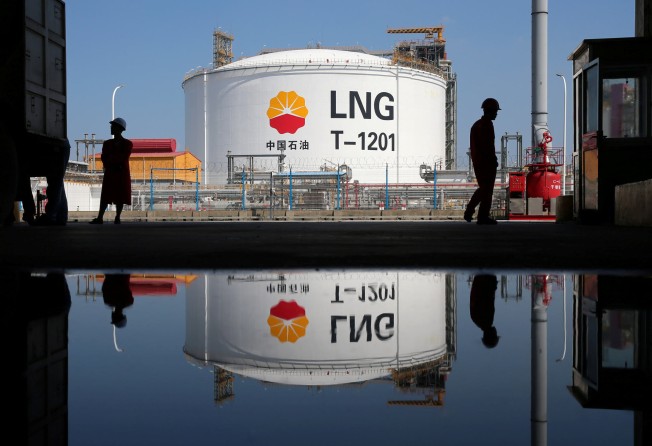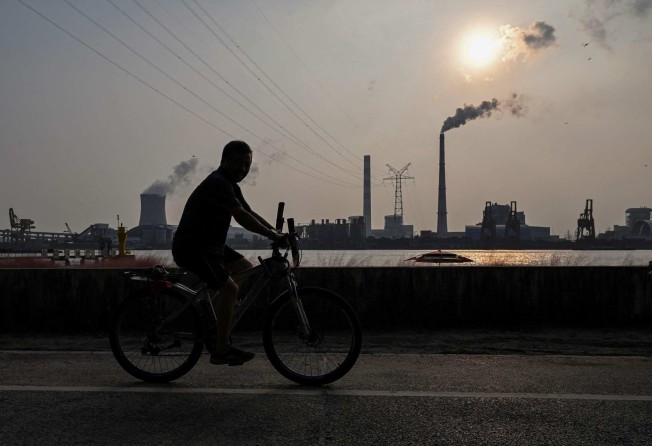
Climate change: China’s state firms take lead in advocating carbon neutrality, must do more about own emissions, experts say
- PetroChina, Baowu Steel Group and Air China were among those making pledges as the country marked National Energy Efficiency Promotion Week
- Just four state-owned enterprises in the power and energy sector have made carbon-neutral pledges with clear deadlines, according to Greenpeace

China’s state firms are front runners when it comes to advocating energy conservation and carbon-emission reduction during China’s annual energy-saving week and low-carbon day. But climate experts said such companies must prioritise reducing their own emissions to help the country achieve its national carbon-neutrality goals.
China’s National Energy Efficiency Promotion Week, which ran from June 13 through 19, saw the National Development and Reform Commission (NDRC), the country’s state economic planner, ordering local governments and organisations to launch online and offline campaigns to raise awareness about energy efficiency and promote low-carbon lifestyles.
PetroChina, China’s largest oil and gas producer, published a proposal during the week saying it will work with all sectors of society to support energy conservation and reduce emissions. The company aims to hit peak carbon emissions by 2025, five years earlier than China’s overall carbon-peaking goal, and to reach “nearly zero emissions” by 2050, a decade earlier than China’s net-zero goal.
Some other major state-owned enterprises (SOEs), including the world’s largest utility, the State Grid Corporation of China, the world’s largest steelmaker, Baowu Steel Group, and the country’s flag carrier, Air China, also announced proposals the same week to support China’s 2060 carbon-neutrality goal, including promoting clean energy and developing low-carbon technologies.

“These events are essential for raising public awareness, but for any large company the priority should be to bring down carbon emissions from its own operations and supply chains as fast as possible,” Tang Damin, a project manager at Greenpeace East Asia, told the Post.
According to state-owned China Central Television, China’s energy intensity – the amount of energy required to produce a given amount of economic output – fell by 26.2 per cent over the last decade, which is equivalent to reducing energy consumption by about 1.4 billion tonnes of standard coal and reducing carbon-dioxide emissions by about 2.94 billion tonnes.
However, the country is still the world’s largest greenhouse-gas emitter and consumer of primary energy, with its total power use surging by 10.3 per cent to reach 8,310 terawatt-hours in 2021, data from the National Energy Administration (NEA) show. According to the International Energy Agency (IEA), China’s total carbon-dioxide emissions rose above 11.9 billion tonnes the same year, accounting for 33 per cent of the global total, and SOEs generate more than half of China’s energy-sector emissions.

Beijing has ramped up efforts to push its SOEs to take the lead in reducing energy consumption and emissions. Last December, China’s state assets watchdog, the State-owned Assets Supervision and Administration Commission of the State Council (SASAC), set a development pattern for the 97 SOEs it currently oversees to achieve peak emissions and net-zero emissions in a timely fashion.
It ordered that by 2025, SOEs must cut their energy consumption per 10,000 yuan of output value by 15 per cent below their 2020 levels. Carbon-dioxide emissions per 10,000 yuan of output value should also be reduced by 18 per cent. The regulator also ordered that the installed proportion of renewable energy power generation at SOEs increase by more than 50 per cent, and that revenue from these firms’ strategic investments in emerging industries account for no less than 30 per cent of their total revenue by 2025.
“Most of the SOE power companies are coal-fired and scale-oriented, so they are all eager to add new renewable capacity funded by ample lending from major domestic state banks,” Lisa Tao, senior credit analyst at Invesco, wrote in a 2021 report.
Four SOEs in the power and energy sector have made carbon-neutral pledges with clear deadlines, according to Greenpeace: China Three Gorges Corporation aims to become carbon neutral by 2040, Sinopec by 2050, China Datang Corporation and China Shenhua Energy by 2060.
“We are very pleased to see that some Chinese companies have announced carbon peaking and carbon neutrality plans,” Greenpeace China wrote, as it launched a carbon-neutrality tracking platform in December. “However, we also found in some companies’ plans that there are some misunderstandings about climate actions and some problems with carbon-neutrality planning.”
The SOEs and other big companies in China need to provide clear deadlines and the scope of their carbon-neutrality pledges and be aware of the emissions not only from the companies’ own operations but also the whole value chain, according to Greenpeace. The enterprises should also recognise, the organisation said, the important role of renewable energy in carbon neutrality, rather than relying too much on purchasing carbon offsets to avoid directly reducing their own emissions.